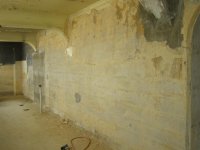Superbowl
Hot Rolled
- Joined
- Feb 12, 2020
I have got some machines that I want to remove peeling paint from without disassembly. The areas around the motors, gibs, lead screws, etc. are not places for grit blasting.
Has anyone tried using dry ice in a small hopper type or pressure pot type sand blasting unit???
It is just for a few small areas so this job is not worth paying a professional with a real dry blasting machine to come out.
Has anyone tried using dry ice in a small hopper type or pressure pot type sand blasting unit???
It is just for a few small areas so this job is not worth paying a professional with a real dry blasting machine to come out.



